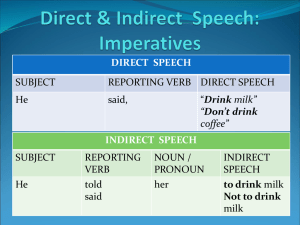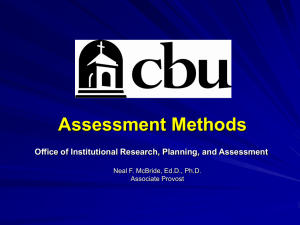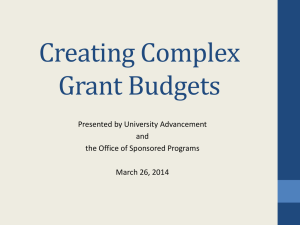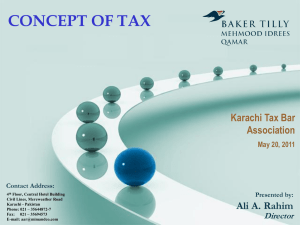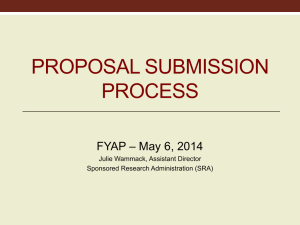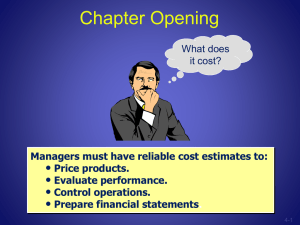DIRECT BENEFITS OF AN INDIRECT COST RATE
advertisement
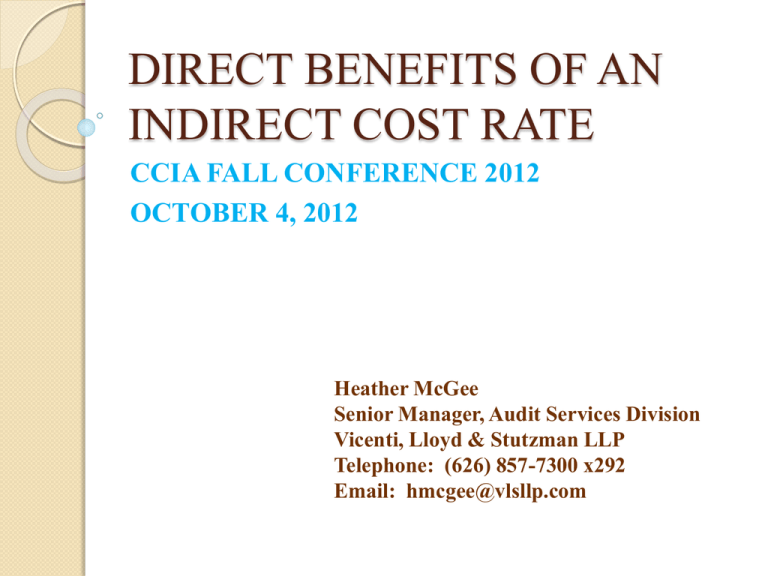
DIRECT BENEFITS OF AN INDIRECT COST RATE CCIA FALL CONFERENCE 2012 OCTOBER 4, 2012 Heather McGee Senior Manager, Audit Services Division Vicenti, Lloyd & Stutzman LLP Telephone: (626) 857-7300 x292 Email: hmcgee@vlsllp.com INTRODUCTION Topics to be covered: General information on the nature of indirect costs and indirect cost rates Benefits of having a federally approved indirect cost rate Process of applying for an approved indirect cost rate Guidelines for preparing an indirect cost proposal 2 NATURE OF INDIRECT COSTS Costs that are incurred for common or joint objectives Cannot be readily identified with a particular project or activity Examples Costs of operating and maintaining facilities, equipment and grounds Depreciation or use allocation General and departmental administration Library expenses 3 BENEFIT OF HAVING AN APPROVED INDIRECT COST RATE Ability to recover a portion of District’s administrative costs for grants and mandated cost programs Leveraging tool when negotiating a grant Provides an indication of the District’s indirect contribution to any grant or special program Assists in the budget process for a grant 4 MANDATED COST REIMBURSEMENT State of California allows reimbursement for 16 different programs. Most common claims for Community Colleges are: Collective Bargaining Enrollment Fee Collection & Waivers Health Elimination Fee Mandate Reimbursement Process I & II 5 MANDATED COST REIMBURSEMENTS Types of Reimbursements allowed by the State Controller’s Office: Default rate 7% Indirect cost rate for state mandates FAM-29C calculation Federally approved rate Varies 6 REIMBURSEMENT OF INDIRECT COSTS FOR FEDERAL GRANTS Training Grants Limit of 8% with or without approved rate Research and Development Grants Varies by grant but typically will allow reimbursement at the approved rate 7 TYPES OF INDIRECT COST RATES Provisional Rate Final Rate Predetermined Rate Fixed Rate with Carry-forward Provision 8 SELECTING THE TYPE OF RATE THAT IS RIGHT FOR YOUR DISTRICT Factors to consider when choosing the type of rate Is the rate adjustable? Will a retroactive adjustment be necessary? Is the District able to close projects in a timely manner? 9 PROPOSAL DOCUMENTS Certificate of Supplemental American Recovery and Reinvestment Act (ARRA) Indirect Costs Indirect Cost Proposal (ICP) Checklist Indirect Cost Proposal 10 SUPPORTING DOCUMENTATION Independently audited financial statements District’s financial statements (CCFS-311) Reconciliation of any differences between expenditures reported per audit and per CCFS-311 Fringe benefit information 11 WHERE TO SUBMIT PROPOSALS Cognizant agency for reviewing and approving indirect cost rates: Department of Health & Human Services Department of Defense 12 DUE DATES AND COVERAGE OF PROPOSALS First-time application Immediately after notification of award No later than 3 months after effective date Previously established rate Within 6 months after the close of each fiscal year Failure to submit timely proposals Time extensions are available 13 GUIDELINES FOR PREPARING INDIRECT COST PROPOSALS OMB Circular A-21 Cost Principles for Educational Institutions Methods of calculating indirect cost rates ◦ Simplified Method: Federal funding* less than $10 million in Federal expenditures. ◦ Long Form Method: Federal funding $10 million or greater in Federal expenditures. *Determination excludes Student Financial Aid funding 14 SIMPLIFIED METHOD Segregate total salaries and wages from other current expenditures (both restricted and unrestricted general fund) Analyze current expenditures Allowable vs. nonallowable Make necessary reclassifications and adjustments Segregate institution’s allowable indirect costs from its direct costs Establish a direct salary and wage base Compute indirect cost rate 15 INDIRECT PROPOSAL FORMAT – SIMPLIFIED METHOD Classification of expenditures Reclassifications Adjustments Calculation of rate 16 FRINGE BENEFITS Information submitted with indirect cost proposal Listing of fringe benefits Copy of fringe benefit policy Description of method(s) used to budget and charge fringe benefits to sponsored agreements Funding practices for a “defined benefit” pension plan Institutions computation of a fringe benefit rate 17 TREATMENT OF FIXED ASSETS Exclusion of capital outlay expenditures Depreciation or use allocation allowance 18 RESOURCE DOCUMENTS OMB Circular A-21: Cost Principles for Education Institutions Indirect Cost Determination, Guidance for State and Local Government Agencies, U.S. Department of Education OMB Circular A-87, Selected Items of Cost A Guide for Colleges and Universities, Cost Principles and Procedures for Establishing Indirect Cost and Other Rates for Grants and Contracts with the Department of Health and Human Services (Appendix E contains a sample calculation using the Simplified Method) Mandated Cost Manual for Schools, State Controller’s Office 19


